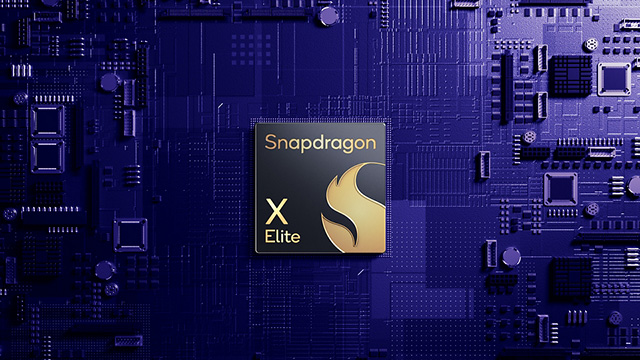
 technology
technology 
Generative AI workloads will be able to run on-chip in the Snapdragon X Elite. Qualcomm claims the Snapdragon X Elite exceeds Apple’s M2 Max chip’s power and energy use.
Qualcomm’s Snapdragon X Elite, a system-on-chip platform for Windows PCs announced at Snapdragon Summit in Maui on October 24, marks a step into the global PC world for the historic mobile device chip maker.
Certain PCs from Acer, ASUS, Dell, HP, HONOR, Lenovo, Microsoft (specifically the Surface line), Samsung and Xiaomi will include Qualcomm Snapdragon X Elite CPUs, Qualcomm announced at the Snapdragon Summit. Laptops running Windows on the Qualcomm Snapdragon X Elite platform are expected to begin shipping in mid-2024.
Jump to:
Qualcomm’s Snapdragon X Elite is a 4nm system-on-chip platform (Figure A) that includes the Qualcomm Oryon CPU, Qualcomm Adreno GPU, the Qualcomm AI Engine with integrated Qualcomm Hexagon NPU, the Qualcomm Sensing Hub and 5G and Wi-Fi 7 connectivity.
Figure A
The 64-bit architecture Qualcomm Oryon CPU has 12 cores for up to 3.8 GHz maximum clock speed. Some variants of the Qualcomm Oryon CPU can be boosted up to 4.3 GHz, according to Qualcomm’s specs sheet. The Adreno GPU runs up to 4.6 TFLOPs and has DX12 API support for graphics.
SEE: Qualcomm partnered with Google on RISC-V compatible CPUs for Wear OS by Google. (TechRepublic)
The AI Engine and NPU allow the Qualcomm Snapdragon X Elite to run generative AI large language models over 13B parameters on-device. Qualcomm proposes the NPU and Sensing Hub combined will make AI data more secure, allowing inferencing (which is part of training a generative AI model) to be done on the chip. The NPU is built to run Windows Studio Effects and other AI-heavy applications.
“The ability to run generative AI applications locally will enable more personalized experiences, improve latency, provide better security and privacy protections and reduce costs,” said Enrique Lores, president and chief executive officer of HP Inc., in a prepared statement for Qualcomm.
During a keynote presentation at the Snapdragon Summit, Qualcomm CEO Cristiano Amon said the Qualcomm Snapdragon X Elite would be competitive with Apple’s M2 Max chip in terms of power and energy use.
“Oryon CPU exceeds the M2 Max,” Amon said during the presentation. “It’s faster than any leading Arm-compatible competitor in single-thread and CPU performance.”
(TechRepublic did not attend the presentation live. We reviewed the recording of the presentation.)
“We believe 2024 is an inflection point in the PC industry,” Kedar Kondap, senior vice president and and general manager of compute and gaming at Qualcomm, told TechRepublic in an email. “There is a large install base of Windows users that are awaiting an upgrade. In addition, market projections show AI PCs will accelerate in 2024 and 2025.”
Chip platforms for PCs have been dominated by Intel and AMD, with Qualcomm mostly making its Arm-based processors for smartphones. Qualcomm’s move into the PC space began with the acquisition of CPU and technology design company Nuvia in 2021. Since then, Arm has sued Qualcomm because, Arm alleges, the purchase and subsequent use of Nuvia designs breached a pre-existing contract between Arm and Qualcomm.
NVIDIA is trying to beat Intel in the Arm-based PC platform market, Reuters reported on October 23.
At the Snapdragon Summit, Qualcomm also announced Snapdragon Seamless, a cross-platform interoperability technology that lets Android, Windows and Snapdragon devices using other operating systems discover each other and share peripherals (e.g., mice and keyboards) and data.
Qualcomm’s Snapdragon Seamless will allow dragging and dropping of files across devices from different manufacturers. The full list of interoperable manufacturers is:
Qualcomm Snapdragon Seamless will be incorporated into Qualcomm’s upcoming Snapdragon 8 Gen 3 premium mobile platform, as well as wearable and audio platforms. Qualcomm expects to expand Snapdragon Seamless to mixed reality, automotive and IoT platforms.
24World Media does not take any responsibility of the information you see on this page. The content this page contains is from independent third-party content provider. If you have any concerns regarding the content, please free to write us here: contact@24worldmedia.com